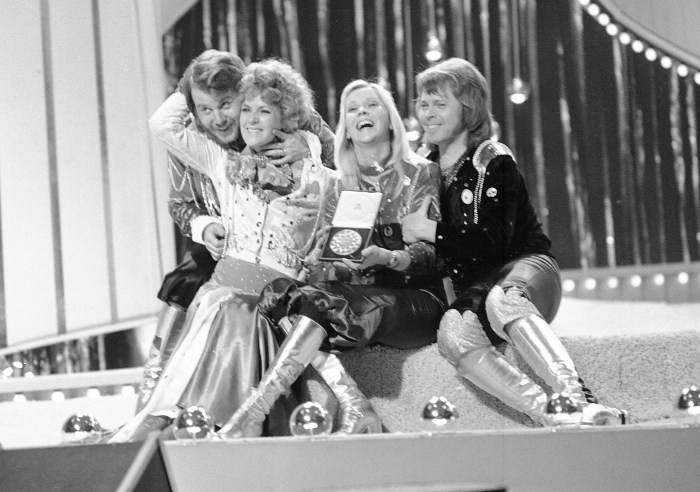You may think you’re too young to start thinking about Alzheimer’s disease, but that’s not the case, says Dr. Gary Small, co-author of “The Alzheimer’s Prevention Program: Keep Your Brain Healthy for the Rest of Your Life.”
“We have been able with our new brain-scanning technologies to peer into the brain and see Alzheimer’s buildup,” he says. “What we found is that you get plaques and tangles decades before you get symptoms. Some people hear that and it freaks them out, [but] to me it’s something positive: It means that we can identify people very early on for experimental treatments, and it really tells us that all of us should start protecting our brain, even when we’re younger.”
So how exactly can we do that? Dr. Small came up with a seven-day plan.
“‘The Alzheimer’s Prevention Program’ lays out what you need to do for seven days to get you on a healthy brain lifestyle no matter what your age,” he says. “A challenge for all of us is taking the information we know about what’s good for us and actually doing something about that — so not eating the steak and fries at 11 o’clock at night but maybe having a healthier diet throughout the day, trying to achieve your optimum body weight, trying to keep your mind active and agile. What we’re trying to do is make it not overwhelming.”
But the author says you can’t just try this type of lifestyle on for size.
“Science doesn’t say, ‘Hey, just do this for seven days and you won’t get Alzheimer’s.’ It says if you continue these kinds of habits over a period of time, you will stave off the symptoms, and the goal is try to delay the onset of symptoms for as long as possible, and ultimately for the rest of your life.”
To view Dr. Small’s first day on the plan, visit metro-us.go-vip.net.
Dr. Small debunks the myths
If my mother or father has Alzheimer’s, I’m destined to get it.
“Genetics is only part of the formula. In fact, for the average person, genetic factors only account for about a third of the risk — that means that up to two-thirds is non-genetic, and a lot of that has to do with the lifestyle choices we make everyday. People have more control than they think.”
Sometimes I forget my keys or where my phone is — I must be getting Alzheimer’s.
“Normal age-related memory slips are common. Everybody, by the time they reach their 40s, has these experiences, and even younger people have them. Often memory slips have to do with distraction or stress — lots of different reasons.”
If I do crossword puzzles, I won’t get Alzheimer’s.
“That’s not enough. You’ll get good at crossword puzzles, but you’ve got to do more than exercise your mind to really reap the benefits of a brain-healthy lifestyle. It’s about tapping into several areas of your life: diet, physical exercise, mental exercise, stress management, having good relationships, staying connected with people — that synergy among those different strategies is what it’s all about.”
How does Alzheimer’s progress?
New studies are suggesting that the debilitating condition spreads not unlike a virus does throughout the brain. When tau, a protein in our brains, does not fold properly, a domino effect takes hold, furthering the misfolding of the protein throughout the brain.
“Think of folding the way we might fold a piece of paper into a paper airplane,” Dr. Small says. “If we misfold it, the paper airplane won’t fly and will crash to the ground. Similarly, the tau protein is no longer functional in stabilizing cell membranes and it becomes insoluble, which likely disrupts and interferes with normal brain cell transmission.”
Newly armed with this knowledge, scientists are theorizing that they can identify just where the unraveling begins and thus put a halt on the progression.
Your first day on The Alzheimer’s Prevention Program
Wake-up stretch and conditioning (2 minutes)
First thing in the morning, do the following stretches and exercises:
Stretch #1: Squat and Reach Stretch. Stand with your feet shoulder width apart. Raise your arms straight up above your head. Swing your arms forward and down behind you as you squat as low as possible. Then swing your arms forward and up above your head as you stand up and balance your body with your feet, hips and shoulders aligned. Hold for 3 seconds. Repeat 4 times.
Conditioning Exercise # 1: Russian Dancer Knee Lifts. Stand upright and fold your arms in front at shoulder height like a Russian folk dancer. Lift your right knee toward your right elbow, and then alternate, bringing your left knee toward your left elbow. Exhale as the knee comes up, inhale as it goes down. Total: 10 per side.
Drink a glass of water.
BREAKFAST
½ grapefruit
¾ cup hot oatmeal with 1 tablespoon raisins or walnuts (if you like)
½ cup nonfat milk or yogurt
Tea, coffee, or sparkling juice (1 part fruit juice plus 2 parts sparkling water over ice)
Added refined sugar is not okay.
MORNING MENTAL WARM-UP
Try doing the crossword puzzle, Sudoku, or KenKen puzzle in the newspaper. (Keep in mind, Monday is usually the easiest and the difficulty increases throughout the week.)
Notice some details of the clothing (color and pattern of a blouse, shirt, tie, etc.) of a family member, roommate, or the first person you see that day. Write those details on a piece of paper and put the note in your pocket or purse.
AEROBICS ON THE GO (5 minutes)
Spend 5 minutes walking briskly outside or on a treadmill, cycling, or doing an aerobic workout of your choice before work or first errand of the day.
OR Park or get dropped off a few minutes away from your first destination, and walk briskly the rest of the way.
Drink a glass of water when you arrive.
MIDMORNING SNACK
1 cup nonfat plain or flavored yogurt with
2 tablespoons chopped walnuts mixed in
Green tea or water
MIDMORNING BRAIN TRAINING (4 minutes)
LOOK, SNAP, CONNECT
The three basic memory skills can be used to help remember people’s names, appointments, shopping lists, or almost any everyday memory challenge:
1. LOOK: Focus your attention on what you want to recall later.
2. SNAP: Form a visual image or mental snapshot of the information you want to learn.
3. CONNECT: Create visual associations to link up your mental snapshots for later recall.
Use this technique to associate the following unrelated word pairs. First, LOOK by focusing your attention and studying the word pair for a moment or two. Then imagine a picture or SNAP for each word. Finally, CONNECT or link the images together. For example, I link together the word pair “football—hammock” by imagining a football resting in a hammock. The associations can be logical or illogical — sometimes the more unusual the connection, the easier it is to recall later.
See how you do with the following word pairs:
telephone — rabbit
fork — candle
papaya — ballerina
LUNCH
Garden salad with 3–6 ounces grilled chicken, vinaigrette dressing
2 whole-grain crackers
Sliced pear
Iced tea or sparkling water with lemon
AFTERNOON STRESS RELIEF (3 minutes)
Sit comfortably, close your eyes and breathe slowly. Visualize your breath as it enters your sinuses, flows down into your chest and expands your rib cage. Slowly exhale through your nose, following your breath as it rises through your chest and sinuses and finally leaves your body. Repeat slowly for 2 to 3 minutes.
AFTERNOON SNACK
1 ounce semifirm cheese of your choice
(e.g., string, cheddar, Swiss, Monterey Jack)
AFTERNOON BRAIN TRAINING (1 minute)
Write down the clothing details that you committed to memory before leaving the house this morning. Check the piece of paper in your pocket to see how you did. For extra credit, you might want to compliment that person on his or her fashion choice when you get home.
DINNER
Tossed green salad with balsamic vinegar and olive oil dressing
Grilled 6-ounce salmon filet with herbs and lemon slices
½ cup brown rice
Steamed spinach
Fruit sorbet
Decaf iced tea, sparkling water and/or a glass of wine
EVENING AEROBICS/STRESS RELIEF (10 minutes)
Take a 10-minute after-dinner walk, followed by drinking a glass of water. If circumstances do not permit a walk, repeat this morning’s Wake-Up Stretch and Conditioning routine.
EVENING BRAIN TRAINING (2 minutes)
When we create mental snapshots, elaborating visual detail helps us make them more memorable. Try this exercise to improve your skill:
Close your eyes and remember something you noticed during the day — it could be a car you saw, a room you were in or a person you met. Spend a few moments recalling as many details of the memory as you can to enrich the mental image. Now that you’re warmed up, see how well you remembered the word pairs from this morning. Below are the first words; say the second word to yourself.
telephone
fork
papaya
NIGHTTIME SNACK
Red or green seedless grapes
TIP FOR THE DAY
We can’t eliminate all the stress from our lives, but we can attempt to manage it better. Try anticipating any potential stress for today so you can take measures to avoid it. For example: leave a few minutes early for work so you don’t have to worry about being late if you get stuck in traffic. You may not notice immediate benefits, but stress reduction has an impact on long-term brain health.



















